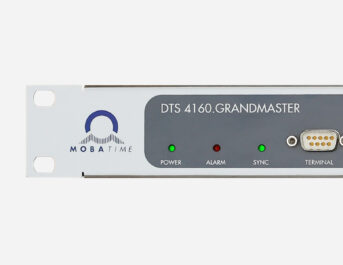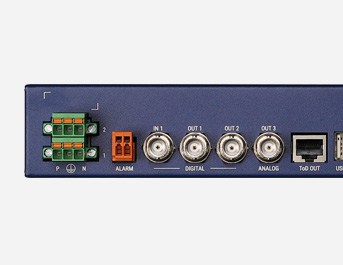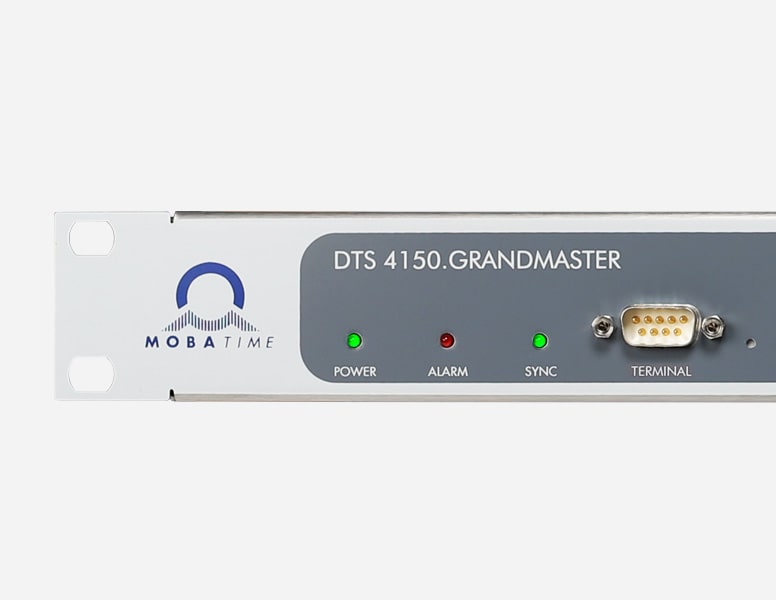Time Synchronization in the Energy Industry

No time to read? Here are the most important topics:
👉 Time synchronization is becoming increasingly vital in the energy sector, ensuring precise coordination across various components of the power grid. This synchronization is essential for the reliable operation of the grid, facilitating efficient communication, event logging, and fault management. As the grid incorporates more advanced technologies, such as smart grids and renewable energy sources, maintaining accurate time synchronization is crucial to optimize performance and uphold grid stability.
👉 The shift towards digital subsystems and the growing market opportunities for time synchronization technologies reflect the sector's evolution. These technologies are pivotal for real-time monitoring, control, and security of the power grid, supporting advanced applications like energy forecasting and cyber security.
👉 Smart grids are also transforming energy distribution, enhancing efficiency and reducing CO2 emissions by integrating renewable energy sources and modern technology. This helps manage the rising global energy demand and promotes sustainable practices.
👉 However, the energy industry faces significant challenges, including adapting to the decentralized production of renewable energies, which requires robust grid systems to handle variable energy inputs. Additionally, cybersecurity risks threaten grid stability, necessitating reliable time synchronization to mitigate these risks and ensure continuous power supply.
👉In essence, time synchronization not only supports the operational integrity of the energy sector but also facilitates its modernization and readiness to tackle future challenges.
Table of content
- Importance of time synchronization in energy industry
1.1 Smart Grids
1.2 Precise synchronization of the IT network - Growth of the energy industry
2.1 Infrastructure Investment
2.2 Transition to renewable energies
2.3 Decentralization and smart grids
2.4 Key features and benefits of smart grids
2.5 Technological innovations
2.6 Cybersecurity and resilience - Challenges in the energy industry
3.1 Integration of supply and grid stability
3.2 Security of supply and grid stability - NTP and PTP in the energy sector
4.1 Reduction of costs - Replacing in stages and not in a single, comprehensive step
5.1 Minimization of operational interruptions
5.2 Cost management and adaptability
1. Why is time synchronization becoming increasingly important for the energy sector?
Time synchronization in the electrical power systems market refers to the precise alignment of clocks and timing devices between different components within the power grid infrastructure. This synchronization is critical to the efficient and reliable operation of the power grid. In the context of the energy industry, accurate time synchronization is crucial for the coordination and synchronization of various devices such as generators, relays and control systems.
It enables seamless communication and coordination and increases the overall reliability and stability of the power grid. In addition, synchronized time data is essential for accurate logging and sequencing of events and helps with post-event analysis, fault detection and grid management.
As the power grid evolves with the integration of advanced technologies such as smart grids and renewable energy sources, the need for accurate time synchronization becomes even more important to optimize system performance and maintain grid stability. In the future, the topic of digital subsystems will become increasingly important, which is why it is a major challenge to develop devices that meet and exceed these requirements.
The opportunities in the market for time synchronization in the electricity grid are large and varied. With the increasing adoption of advanced technologies, the need for improved time synchronization solutions is growing. These technologies make it easier to monitor, control and protect the power grid in real time and offer market players the opportunity to offer innovative time synchronization solutions. In addition, the digital transformation of the energy industry is increasing the demand for synchronized time data to support advanced applications such as energy forecasting, predictive maintenance and cyber security in the grid.
1.1 Smart Grids
The smart grid is an electricity grid technology that reduces CO2 emissions through more efficient energy utilization and manages the increasing global demand for energy. It integrates the actions of producers, distributors and consumers and combines modern products and services with advanced monitoring, control, self-repairing technologies and bidirectional communication. In smart grid systems, precise and reliable time and frequency synchronization is essential to increase the performance of the grid. This includes a wide range of functions such as fault detection, grid clarification, synchrophasor measurements for grid stability, time stamping of events, data acquisition, demand side management, differential protection, frequency deviation measurements and the synchronization of smart meters.
- Power generators
Power generators, renewable energies and optimized storage options promote the most economical forms of energy. - In the future: High efficiency for everyone involved
The efficient use of renewable energies reduces the consumption of fossil fuels and the production of nuclear waste. The smart grid infrastructure is optimized to achieve these goals. - Automation of substations
Resources are monitored and controlled to ensure a continuous energy supply. - Network operation
Grid operators receive information from sources within the grid community and send data such as price and tariff signals back to all participants. - End consumer
Substations convert electricity from the transmission voltage to a lower voltage that is used for local distribution to homes and businesses. - End consumer devices
Receive price and tariff signals to make smart energy usage decisions.
2. Why is the energy industry getting bigger and bigger?
The growth is due to a variety of factors, ranging from technological advances and environmental concerns to political and economic changes. Below we look at the main reasons for the growth of the energy industry and how these factors influence the time synchronization requirements of the sector.
2.1 Infrastructure Investment
Significant investments are being made to modernize the grid and enhance its reliability and resilience. This includes upgrading existing infrastructure, integrating smart grid technologies, and expanding battery storage capacity. For example, the U.S. Infrastructure Investment and Jobs Act has allocated billions of dollars for grid improvements and clean energy projects.
2.2 Transition to renewable energies
Another key driver is the transition to renewable energies. The need to reduce CO2 emissions and combat climate change has led to the increased use of solar, wind and hydro-power. Renewable energy sources are making up an ever-increasing share of the global energy mix. According to a study by BloombergNEF, around 50% of the world's electricity will come from renewable sources by 2050.
2.3 Decentralization and smart grids
The integration of renewable energies is also accompanied by a decentralization of energy production. In the past, energy production was highly centralized, but today there are many small, distributed energy sources that need to work together. Traditionally, energy was produced in large, centralized plants such as nuclear or coal-fired power stations. These were often far away from the centres of consumption.
The decentralization of energy generation means that electricity is increasingly being produced on a smaller scale, closer to where it is consumed. This is often done through technologies such as solar photovoltaic systems or small wind turbines, which can be installed directly in residential areas or on industrial sites. A key feature of these decentralized systems is that they often use renewable energy, which is in line with the goals of the energy transition, which is driving the transition to a more sustainable energy supply from renewable sources
2.4 Key features and benefits of smart grids
2.5 Technological innovations
Technological advances also play a key role in the growth of the power industry. New technologies such as energy storage, smart metering and advanced control systems are improving the efficiency and reliability of the energy supply.
2.6 Cybersecurity and resilience
The increasing digitalization of energy grids also brings challenges in terms of cybersecurity and resilience. Energy infrastructures are attractive targets for cyberattacks, which can have a significant impact on the power supply. Precise time synchronization is crucial to implement security protocols and to quickly detect and resolve anomalies. They are targeted by cyberattacks because their disruption can cause significant societal and economic impact, making them attractive targets for attackers seeking to create chaos, steal information, or demand ransoms. The increasing digitalization and automation of power grids, while improving efficiency and adaptability, also introduce new vulnerabilities. These vulnerabilities include phishing and social engineering to manipulate employees, malware and ransomware to damage operations or extort payments, and Distributed Denial of Service (DDoS) attacks to overload and disrupt systems. Ensuring cybersecurity in these networks is crucial to maintaining their resilience and functionality
3. What are the challenges in the energy industry?
The energy industry faces the challenge of integrating digital technologies and developing innovative solutions to improve efficiency and reliability. This includes the implementation of smart grids, smart meters and advanced energy storage systems. These technologies require significant hardware side and training to realize their full potential while reducing operating costs.
3.1 Integration of renewable energies
The transition to renewable energy is one of the biggest challenges, especially due to the variable nature of wind and solar energy. These energy sources are highly weather-dependent and do not provide a constant power supply compared to traditional energy sources such as coal or nuclear power. The resulting unpredictability requires robust and flexible electricity grids that are capable of balancing irregular feed-ins and maintaining grid stability. Such fluctuations affect the ability of grids to maintain a constant frequency and voltage, which poses a challenge to maintaining grid stability.
In order to manage these fluctuations, there is an increased need for energy storage systems that can store energy during periods of high production and release it again when required. In addition, the integration of renewable energy requires extensive investment in infrastructure to ensure broad distribution and efficient energy management, which includes the construction of physical connections and the implementation of advanced control and communication systems. Furthermore, regulatory and operational adjustments are required to develop new practices and regulations that support and promote the equitable integration of these energies into existing markets.
3.2 Security of supply and grid stability
Maintaining security of supply and grid stability is a key challenge, especially in view of the increasing decentralization of energy generation. Grid operators must ensure that the grid remains stable and outages are avoided despite the increasing feed-in of renewable energies.
The challenges and costs associated with outages and disruptions in the energy supply, particularly in the context of decentralized energy generation, are significant and complex. Grid operators and energy suppliers are liable for property damage and financial losses that may result from such interruptions. The decentralized feed-in of renewable energies further complicates the fail-safe supply of electricity, as it makes grid management more difficult due to irregular energy production. This can lead to overloading of the electricity grid, which in turn increases the likelihood of power outages. Such outages have a direct economic impact as they can result in lost production and lost sales. In addition, they often require expensive repairs and system adjustments to strengthen grid resilience. In the long term, operators are faced with the need to invest in more robust, flexible energy systems in order to effectively overcome these challenges and ensure a sustainable energy supply.
4. Why do you need NTP and/or PTP in this sector?
Various timing technologies are used for synchronization in power grids. Traditional power systems use IRIG-B which, depending on the version used (TTL or AM), can provide an accuracy of 1 microsecond to a few microseconds. The main disadvantage of IRIG-B is that it requires special cabling and network delays are not automatically calibrated.
The Network Time Protocol (NTP), on the other hand, calibrates network delays automatically due to its bidirectional timing protocol. In addition, NTP utilizes the data network, which is more efficient in terms of cabling compared to IRIG-B. However, it only achieves a typical accuracy of around 1 millisecond.
In contrast, the Precision Time Protocol (PTP) offers the advantages of IRIG-B and NTP: it achieves an accuracy of 100 nanoseconds to 1 microsecond within a substation. In addition, PTP performs automatic network calibration and uses the data network so that no additional cables are required for time transmission.
For the energy industry, maintaining high reliability with sub-millisecond or sub-microsecond time accuracy is crucial. This is especially true in sensitive sectors like power grids, which include medium-voltage power lines, low-voltage wiring, substations, and pole-mounted transformers. Uninterrupted operation and precise time stamping of all events are essential for tracking disturbances. Therefore, having an absolute time reference is imperative.
For more information and an example of what an application could look like, click here.
4.1 Reduction of energy generation costs
In addition, these protocols support the integration and reliable operation of renewable energies, which pose particular challenges to grid stability due to their intermittent nature. Precise time synchronization enables effective control and efficient response to changes in energy generation and demand, which ultimately helps to reduce energy generation costs (Sources: Pacific Northwest National Laboratory, Energy Strategy Reviews)
Ensuring accurate and consistent time synchronization via NTP and PTP also improves the ability to quickly identify and respond to incidents and irregularities in the network.
5. Replacing in stages and not in a single, comprehensive step
The gradual renewal makes it possible to maintain the technical integrity and safety of the entire system. Every device in an energy supply system is networked with other components and constantly interacts with them. A complete replacement could cause unforeseen technical problems that could jeopardize the stability of the grid. Gradual replacement ensures that each new device functions properly and is compatible with the existing system components before replacing other devices.
5.1 Minimization of operational interruptions
A step-by-step replacement minimizes operational interruptions that could be caused by extensive upgrades. Power grids, as we already know, are critical infrastructures that need to function continuously. Comprehensive equipment replacement would potentially lead to extended downtime, which could have a significant impact on homes, businesses and even security.
5.2 Cost management and adaptability
Gradual replacement allows for better control and distribution of financial resources. Large investments all at once could jeopardize a company's financial stability. By planning smaller upgrades spread over time, companies can better manage their budgets while investing in new technologies as they become available and affordable.
Each time a new device is installed, it provides the opportunity to learn from the process and make adjustments. These learnings can then be incorporated into future installations, improving the efficiency and effectiveness of upgrades. Technology is evolving rapidly and what is considered cutting edge today may be obsolete tomorrow. A step-by-step approach makes it possible to always implement the latest technology.
Would you like to find out more about this topic or do you need support with one of your projects?
Get in touch with us - we'll help you!



